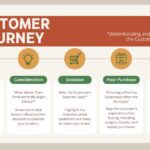In a world where digital connectivity reigns supreme, the internet has become an omnipresent force, shaping the way we interact, learn, and make decisions.
This paradigm shift extends its transformative touch to the realm of healthcare, where online advertising emerges as a game-changer, revolutionizing patient care and opening new doors of opportunity for medical professionals.
Imagine a scenario where individuals seeking medical advice, searching for specialists, or exploring treatment options can effortlessly navigate a virtual realm where knowledge is readily available at their fingertips. Just imagine that and tell me how it feels!
The vast reach of online advertising in the healthcare industry serves as a beacon of hope, empowering both patients and healthcare providers alike.
In this riveting journey, we will delve into the captivating world of online advertising for healthcare, unearthing its potential to bridge gaps, inspire trust, and deliver tailored care.
Join me as we unravel the secrets to a successful online advertising campaign that will captivate your target audience, leaving an indelible mark on their quest for health and well-being.
Get ready to embark on a digital voyage that will reshape your perspective on healthcare marketing, unravel new possibilities, and illuminate the path to a brighter, healthier future.
Let’s dive in together, and discover how online advertising can transform the way we connect, educate, and heal in the ever-evolving digital marketing space.

Table of Contents
ToggleHow Does Online Advertising Benefit The Healthcare Industry?
#1. Enhancing Patient Care
Online advertising empowers healthcare providers to deliver personalized and timely information to patients, significantly enhancing the quality of care.
Through targeted ads, patients can be informed about new treatment options, preventive measures, and healthcare resources specific to their needs.
This personalized approach fosters a stronger patient-provider relationship, leading to improved health outcomes and overall satisfaction.
#2. Increasing Awareness
One of the most significant advantages of online advertising in healthcare is its ability to raise awareness about various medical conditions, procedures, and services.
By utilizing social media platforms, search engine ads, and informative content marketing, healthcare organizations can reach a vast audience and educate them about vital health issues.
This increased awareness promotes early detection, encourages preventive measures, and reduces the stigma associated with certain medical conditions.
3. Encouraging Patient Engagement
Online advertising provides an avenue for healthcare providers to engage with patients beyond the walls of a clinic or hospital.
Interactive advertisements, educational videos, and engaging social media campaigns encourage individuals to actively participate in their healthcare journey.
Patients can access relevant information, participate in online communities, and seek virtual consultations, fostering a sense of empowerment and ownership over their well-being.
#4. Facilitating Access to Specialized Care
Online advertising enables healthcare organizations to promote specialized services and connect patients with experts in various medical fields.
By leveraging targeted ads, medical professionals can reach individuals who might otherwise face challenges accessing specialized care due to geographical constraints or lack of awareness.
This leads to improved patient outcomes, as individuals can receive the appropriate treatment they require, regardless of their location.
#5. Promoting Health and Wellness
Online advertising serves as a powerful tool to promote healthy lifestyles and wellness initiatives. Through captivating campaigns, healthcare providers can inspire individuals to adopt healthier habits, participate in fitness programs, and make informed dietary choices.
By providing valuable resources and practical tips, online ads contribute to a healthier society, reducing the burden on healthcare systems and improving overall public health.
By enhancing patient care, increasing awareness, encouraging engagement, facilitating access to specialized care, and promoting health and wellness, online advertising has the potential to create a healthier future for us all.
So, let us embrace the power of online advertising and embark on a journey toward a brighter and healthier tomorrow.
What Platforms And Channels Are Best Suited For Online Advertising For Healthcare?

#1. Social Media: Where Connection Meets Health
Social media platforms, such as Facebook, Instagram, and Twitter, offer a powerful and interactive space to connect with a wide audience.
Utilize captivating visuals, compelling stories, and informative content to engage users. Share health tips, success stories, and updates about your services.
Encourage dialogue, answer questions, and provide valuable insights. Social media’s ability to foster community and facilitate sharing makes it an excellent platform for building brand loyalty and awareness.
#2. Search Engines: Making Health Information Accessible
Search engine advertising, specifically Google Ads, allows healthcare organizations to reach potential patients actively seeking information.
Leverage targeted keywords to display ads that appear when users search for specific health topics or services.
Ensure your website is optimized for search engines to increase visibility. With search engine advertising, you can drive qualified traffic to your website, generate leads, and capture the attention of individuals seeking healthcare solutions.
#3. Content Marketing: Inform, Educate, Inspire
Content marketing is an effective strategy for healthcare advertising, as it enables you to provide valuable information while establishing your expertise.
Create engaging blog articles, informative videos, and visually appealing infographics. Address common health concerns, share expert advice, and offer practical tips for maintaining well-being.
Distribute your content through various channels, such as your website, social media platforms, and email newsletters, to reach and engage your target audience effectively.
#4. Influencer Partnerships: Trusted Voices for Health
Influencer marketing has gained significant traction in recent years and can be a powerful tool in healthcare advertising.
Collaborate with trusted influencers, such as doctors, nutritionists, or fitness experts, who align with your brand’s values.
These influencers can share their experiences, endorse your products or services, and engage their dedicated followers.
Harness the power of their influence to build credibility, reach new audiences, and drive conversions.
#5. Mobile Advertising: Reaching Audiences On the Go
With the rise of smartphones, mobile advertising has become an essential component of any successful healthcare advertising campaign.
Leverage mobile apps, mobile websites, and targeted mobile ads to reach individuals while they are on the go.
Consider utilizing location-based targeting to promote healthcare services, clinics, or hospitals in specific areas.
Mobile advertising ensures that your message reaches the right people at the right time, maximizing engagement and conversions.
In the world of healthcare advertising, choosing the right platforms is key to capturing the attention of your audience, building brand awareness, and driving meaningful engagement.
What Are The Key Components Of A Successful Healthcare Advertising Campaign?
#1. Compelling Messaging: Speak to the Heart and Mind
Craft a captivating message that resonates with your audience’s emotions and speaks to their needs. Use clear and concise language that conveys the benefits of your healthcare products or services. Address their pain points and offer solutions that ignite their curiosity.
Your messaging should be relatable, informative, and inspiring, fostering a deep connection that compels individuals to take action.
#2. Targeted Audience: Precision Pays Off
Identify your target audience with precision to ensure your message reaches those who are most likely to be interested in your healthcare offerings.
Conduct thorough market research, analyze demographics, and understand the specific needs and preferences of your ideal customers.
Tailor your advertising campaigns to resonate with their unique characteristics and motivations. By targeting the right audience, you maximize your chances of generating qualified leads and conversions.
#3. Engaging Visuals: The Power of Eye-Catching Design
Visual appeal is a cornerstone of successful healthcare advertising. Utilize high-quality images, captivating videos, and visually appealing graphics that capture attention and convey your message effectively.
Ensure your visuals align with your brand identity and evoke positive emotions. Whether it’s a smiling patient, an inspiring transformation, or a relatable scenario, captivating visuals can communicate your value proposition and leave a lasting impression.
#4. Call to Action: Directing the Path to Conversion
A compelling call to action is the driving force behind conversions. Clearly state what you want your audience to do next, whether it’s scheduling an appointment, subscribing to a newsletter, or exploring more about your services.
Use action-oriented language, such as “Book Now,” “Learn More,” or “Get Started.” Make the next steps easy to follow, whether it’s providing a clickable link, a phone number, or a simple form to fill out.
#5. Performance Tracking: Data-Driven Success
Monitoring and analyzing the performance of your healthcare advertising campaign is vital for continuous improvement.
Leverage analytics tools to track key metrics, such as click-through rates, conversion rates, and engagement levels.
Evaluate the effectiveness of different channels, messaging variations, and visuals to optimize your campaign.
Use the insights gained to refine your approach, make data-driven decisions, and allocate resources efficiently.
A thriving healthcare advertising campaign requires careful attention to key components that engage, inspire, and convert.
How Can Online Advertising Help Healthcare Providers Reach Their Target Audience Effectively?
#1. Precision Targeting: Pinpointing the Right Audience
Online advertising allows healthcare providers to target their ideal audience with unparalleled precision.
Through advanced targeting options, you can narrow down your audience based on demographics, location, interests, and even specific health-related behaviors.
This precision ensures that your message reaches the individuals who are most likely to be interested in your services, maximizing your chances of capturing their attention and driving conversions.
#2. Wide Reach: Breaking Geographical Barriers
With online advertising, healthcare providers can extend their reach far beyond their physical location. Digital platforms, such as social media, search engines, and healthcare-related websites, have a vast user base that spans regions and even countries.
By leveraging these platforms, you can effectively connect with individuals who may not have been aware of your services otherwise.
This expanded reach opens doors to new opportunities and a broader patient base.
#3. Personalized Messaging: Forging a Meaningful Connection
Online advertising allows healthcare providers to tailor their messaging to specific segments of their target audience.
By addressing the unique needs, concerns, and aspirations of different groups, you can create a personalized connection that resonates deeply.
Craft messages that speak directly to the pain points, aspirations, and desired outcomes of your audience, demonstrating that you understand and can fulfill their healthcare needs.
#4. Engaging Visuals: Captivating Attention in a Digital World
In the vast digital landscape, attention spans are short. Online advertising provides healthcare providers with the opportunity to create visually appealing ads that capture attention and leave a lasting impression.
Utilize high-quality images, videos, and interactive elements to convey your message effectively. Engaging visuals not only attract attention but also evoke emotions, making your brand memorable and increasing the likelihood of audience engagement.
#5. Performance Tracking: Data-Driven Optimization
One of the greatest advantages of online advertising is the ability to track and measure campaign performance.
Utilize analytics tools to gain valuable insights into key metrics such as click-through rates, conversion rates, and engagement levels.
Analyze the data to optimize your marketing strategy, refine targeting, adjust messaging, and allocate resources effectively.
Data-driven decision-making ensures that your efforts are focused on what works best for reaching and engaging your target audience.
Online advertising has transformed the way healthcare providers connect with their target audience, offering unprecedented opportunities for visibility, engagement, and impact.
What Are Some Effective Ways To Create Engaging And Compelling Healthcare Advertisements?
#1. Storytelling: Ignite Emotions and Inspire Action
Craft a compelling narrative that resonates with your audience’s emotions and aspirations. Tell a story that highlights the transformational power of your healthcare services or products.
Share real-life success stories, testimonials, or personal experiences that evoke empathy and create a sense of connection.
By weaving a powerful narrative, you can ignite emotions, inspire action, and make a lasting impact in the hearts of your audience.
#2. Visual Appeal: Paint a Picture Worth a Thousand Words
Utilize visually striking imagery that captures attention and communicates your message effectively. Incorporate high-quality images and videos that evoke positive emotions and convey the benefits of your healthcare offerings.
Ensure that the visuals align with your brand identity and resonate with your target audience. By creating visually appealing advertisements, you can leave a lasting impression and make your brand memorable.
#3. Simplicity and Clarity: Communicate with Impact
Keep your advertisements simple and concise to avoid overwhelming your audience with excessive information.
Communicate the key benefits and value propositions of your healthcare services or products. Use language that is easy to understand, avoiding jargon and technical terms.
Remember, clarity is key to capturing attention and ensuring your message is understood and retained by your audience.
#3. Call to Action: Direct the Path to Engagement
Include a clear and compelling call to action that directs your audience toward the desired action. Whether it’s booking an appointment, subscribing to a newsletter, or exploring your website for more information, guide your audience with actionable language and clear instructions.
Make the next steps easy to follow and provide convenient options for engagement, such as clickable links or contact information.
#4. Authenticity and Trust: Build Credibility
Authenticity is crucial in healthcare advertisements. Build trust with your audience by showcasing real healthcare professionals, patient testimonials, or certifications and accreditations.
Highlight your expertise, experience, and commitment to quality care.
By establishing credibility, you create a sense of trust that resonates with your audience and encourages them to choose your healthcare services over competitors.
Creating engaging and compelling healthcare advertisements requires a blend of storytelling, visual appeal, simplicity, clear calls to action, and authenticity.
How Does Online Advertising Help In Promoting Patient Education And Preventive Care?
#1. Targeted Messaging: Informing the Right Audience
Online advertising allows healthcare providers to deliver targeted messages directly to individuals who are most likely to benefit from patient education and preventive care.
Through precise targeting based on demographics, interests, and health-related behaviors, you can reach those who need specific information and guidance.
By tailoring your messaging to their unique needs, you can create a more impactful and relevant educational experience.
#2. Engaging Content: Making Health Information Accessible
Online advertising provides a platform for delivering engaging and informative content that educates individuals about various health topics.
Create compelling blog articles, videos, infographics, and interactive tools that simplify complex concepts and make health information accessible.
Use engaging visuals, storytelling techniques, and relatable examples to capture attention and inspire individuals to learn more about preventive care and healthy lifestyle choices.
#3. Call to Action: Encouraging Proactive Healthcare
Include clear calls to action in your online advertisements to prompt individuals to take proactive steps toward their health and wellness.
Encourage them to schedule regular check-ups, screenings, or vaccinations. Provide links to educational resources, self-assessment tools, or online classes that empower them to make informed decisions and adopt preventive measures.
By guiding individuals towards action, online advertising can promote a culture of proactive healthcare.
#4. Interactive Platforms: Facilitating Learning and Participation
Online advertising can direct individuals to interactive platforms where they can actively engage in patient education and preventive care.
Utilize social media groups, online forums, and healthcare apps to foster a sense of community and encourage knowledge sharing. Provide opportunities for individuals to ask questions, share experiences, and access reliable health resources.
Interactive platforms empower individuals to become active participants in their healthcare journey.
#5. Continuous Engagement: Nurturing Lifelong Learning
Online advertising enables healthcare providers to maintain a continuous engagement with their audience, nurturing lifelong learning and preventive care practices.
Utilize email newsletters, social media updates, and targeted content distribution to deliver ongoing educational materials and health reminders.
By staying connected, you can reinforce key messages, provide timely updates, and empower individuals to make informed decisions for their health and well-being.
Online advertising has transformed patient education and preventive care by providing targeted messaging, engaging content, clear calls to action, interactive platforms, and continuous engagement.
How Can Healthcare Organizations Optimize Their Online Advertising Budget For Maximum Return On Investment?
#1. Define Clear Objectives: Set the Course for Success
Before diving into online advertising, establish clear and measurable objectives. Determine what you want to achieve, whether it’s increasing website traffic, generating leads, or driving conversions.
Align your objectives with specific key performance indicators (KPIs) to track your progress effectively. By having well-defined goals, you can make informed decisions and optimize your budget toward achieving desired outcomes.
#2. Targeted Audience: Precision Trumps Wasted Spend
Identify your target audience with precision to optimize your budget effectively. Conduct thorough market research, analyze demographics, and understand your audience’s preferences and behaviors.
Leverage advanced targeting options provided by digital platforms to ensure your ads reach the right people at the right time.
By focusing on your ideal audience, you minimize wasted spend and increase the likelihood of engaging with individuals who are most likely to convert.
#3. A/B Testing: Fine-Tune Your Approach
Implement A/B testing to refine your online advertising strategy continuously. Create variations of your ads, such as different headlines, visuals, or calls to action, and test them against each other to determine which performs better.
By analyzing the results, you can optimize your campaigns, allocate resources to the most effective elements, and drive higher ROI.
A/B testing allows you to make data-driven decisions and continuously improve your advertising efforts.
#4. Conversion Tracking: Measure, Optimize, Succeed
Implement conversion tracking mechanisms to measure the effectiveness of your online advertising campaigns.
Track key metrics such as click-through rates, conversion rates, and cost per acquisition. Analyze the data to identify areas of improvement, optimize your campaigns accordingly, and reallocate your budget to high-performing channels or strategies.
Conversion tracking ensures you invest your resources where they yield the highest returns.
#5. Continuous Monitoring and Optimization: Stay Ahead of the Curve
Monitor your online advertising campaigns regularly and make timely adjustments. Keep a close eye on the performance metrics and adjust your targeting, messaging, and visuals as needed.
Leverage real-time data to optimize your budget allocation, ensuring maximum impact and ROI.
By staying proactive and responsive, you can adapt to changes in the market, customer behavior, and advertising trends, maintaining a competitive edge.
Conclusion
Online advertising has transformed the healthcare industry by enhancing patient care, increasing awareness, encouraging patient engagement, facilitating access to specialized care, and promoting health and wellness.
It benefits healthcare providers by allowing them to deliver personalized and timely information to patients, raise awareness about medical conditions and services, engage with patients beyond the clinic, promote specialized care, and inspire individuals to adopt healthier habits.







